
-
I was going off topic in this thread GH4 4K Panasonic video camera, User reviews and opinions... So I'll continue here.
Here is my GH4 to BMD LUT, remember it's not an exact color match because I don't think the GH4 can go there with a 8bit recording.
Here is a sample of the LUT correcting a GH4 frame to "match" BMCC.
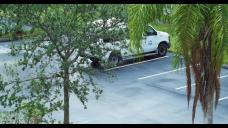
 GH4.jpg1920 x 1080 - 944K
GH4.jpg1920 x 1080 - 944K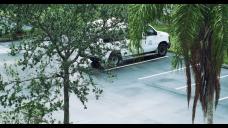
 GH4BMD.jpg1920 x 1080 - 967K
GH4BMD.jpg1920 x 1080 - 967K
 BMCC.jpg1920 x 1080 - 968K
BMCC.jpg1920 x 1080 - 968K
 GH4BMD2.cube.zip385K
GH4BMD2.cube.zip385K -
Thanks for posting your LUT. I don't have many material recorded in CineD 0,-5-5-5,0 right now, but will try a few test shots soon and let you know what I think. Right now, my first impression is this LUT does a little 'grading'. Shot's seem a little 'dark mood style'. By accident I applied both your LUT and Noam Kroll's one and find the result very nice :)
Let me get more scenes. Again, thanks or sharing your thoughts and LUT.
-
Forgot to say, adding saturation to your LUT also gives me pleasant results. Will test with other shots and see the results in my home cinema projector, where thinks look different (and where I'm used to see final results).
-
@jopereira Thx for your feedback. It's a LUT made to be applied before a simple grade. (Contrast + Saturation) it's not for a final look from CineD. I made it so it feels like a BMD footage, because I like the colors out of the bmcc cameras.
I find the colors straight out of the gh4 too vibrant more so in the yellow to green hue (the video look).
-
@yak You made it clear you’re looking for BMCC look :) . Sorry, my bad.
Have you tried Natural photo style (contrast -5, perhaps with a small s-curve in shadows/highlights to get dynamic range comparable with Cinelike-D)? Many run away from Cinelike-D because Natural seems to produce better (= more accurate) colors.
In either case, from what I observed yesterday, your LUT doesn't seem to produce big changes in overall dynamic values of the scene (only in in-between values), which is a good thing. Noam Kroll's LUT increases highlights a lot and decreases shadow too much to keep values in there limits, and clipping may occur if scene is exposed properly in first place. Nice job of you.
A question to this forum: applying this LUT in Magic Bullet Looks makes a big difference from applying it in PremierPro Lumetri - MB Looks makes magenta blotches similar to what V-Log does in the same circumstances. Any idea why?
-
@jopereira I've tried natural -X, but from what I have learned from GH3 and it seems to be the case for the GH4, I don't touch the in camera contrast as it only "boosts" the mid-tones. There is not enough gain in DR doing so and your stuck with compressed mid tones that under certain lightning can be irrecuperable. That's why I go with CineD, more DR less "contrasty" from highlights to shadows and as long as you keep it at 0 the color looks fine to me. Don't know if that makes sense.
Noam Kroll's lut was made to give a usable contrasted look from CineD, It's very good but if your scene is not shot in perfect exposure you have to grade the footage down witch me be even more complicated.
As for my LUT it's better to use on a flatter profile because there is a slight S-Curve in it that decompress the midtones.
-
@yak I'm not a professional in video/film market, I'm simply an amateur. So take my word as is. After a few more tests, I think your LUT makes skin less alive/cooler than I want/I think is 'real'. Other colors also shift a lot not to be recognized as the real deal. I don't know if BMCC workflow corrects this, but I think we must have a copy as close as possible to what reality is, then the grading/creative process takes place.
Here is a scene with original Cinelike-D 0,-5,-5-5,0, your LUT with S-curve and some saturation, and the one I did based on some of you comments (particularly, shifted and desaturated the yellow and orange towards red + some blue to shadows). I also attach my configuration and a LUT for it.
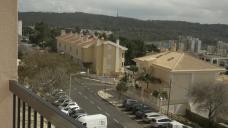
 Original.jpg1920 x 1080 - 871K
Original.jpg1920 x 1080 - 871K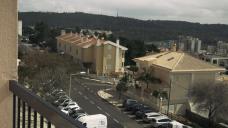
 GH4BMD2.jpg1920 x 1080 - 927K
GH4BMD2.jpg1920 x 1080 - 927K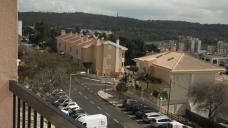
 QuimLUT.jpg1920 x 1080 - 910K
QuimLUT.jpg1920 x 1080 - 910K
 Colorista.png467 x 742 - 81K
Colorista.png467 x 742 - 81K
 CineD QuimLUT.zip740K
CineD QuimLUT.zip740K -
Is this sky banding normal? I compared GH4 video and photo with difficult scene.
I have unedited and uncompressed GH4 source frames from Potplayer. I saved to PNG and then opened to Photoshop and converted to high quality JPG. GH4 settings was: Iso200, exposure 0, no HL/SH, sharpness -2, NR -5, color 0 and contrast 0, Standard. Levels 0-255. I used iDynamic low like I do outdoors. I took also one RAW photo and converted JPG with ACR.
Photo has much less banding than video captures.
I took these hand held so the framing is not the same in images.
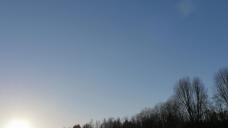
 standard0.jpg3840 x 2160 - 2M
standard0.jpg3840 x 2160 - 2M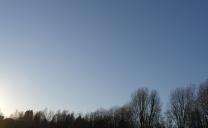
 photo-gh4.jpg4608 x 2832 - 2M
photo-gh4.jpg4608 x 2832 - 2M -
After a year of messing I have settled on natural with all 0's except maybe -3 on NR.. Not the most cinematic but the most please to my eye out of camera with no need for grading
-
Yes, out of the camera is probably the best. But after we learn every shot can benefit from some kind of adjustment, I just don't care. I choose the profile that gives me better quality in the end - I just want a LUT to make it 'standard' so I can mess around that.
-
I wonder where comes the sky banding and little rough video image in GH4? Is it scaler, codec, sharpening, image adjustments, etc. When rendering a JPG photo to video even at low bitrate there is no such banding. I think the GH4 and all Panasonic cameras fools somehow with colors. Maybe GH4 reads sensor in video with limited color palette? I think that Canon/Nikon may have smoother color palette than Panasonic. The GH2 colors are quite visible limited compared to photos. GH3 is better and GH4 again smoother but not perfect.
-
Banding comes from 8 bit 4:2:0 sampling in the camera. It is very noticeable when using V-log. You cannot compare still image quality with video as the sensor data is processed very differently in the camera.
-
Banding comes from 8 bit 4:2:0 sampling in the camera.
Yes banding comes from camera but in generally 8bit 4:2:0 codec can make banding free result especially with 100 Mbs. When I watch TV programs with very low bitrate there is less banding in skies than in GH4 100 Mbs 4k files. 4:2:0 is not limiting color steps, it just reduces color resolution. If I render a photo slideshow in 8bit 4:2:0 video there is no banding.
Has the Panasonic codec less "colors" than others? Or is there differences in color channels? I have heard that Panasonic cameras records green colors better than others but has difficulties in skin tones (reds) and skies.
-
I think that Sony RX100 mk4 has less banding in sky in this example than my GH4:
-
Here is an example of GH4 iso200 video with lots of skies (not mine). There is something like noise all the time in sky but it cant be noise at iso200 and bright sky. Why the sky is not clean?
-
quantization noise and compression noise
-
Why the sky is not clean?
Answer= The GH4 is a noisy little camera.... No matter what you do you will see noise when shooting video on the GH4 even at ISO 200. If the noise at 200 ISO bothers you, well you might as well sell the camera because trust me the noise will be there no matter what you do. I am ok with the noise at ISO 200 and with Neat Video it cleans up pretty nicely but if you are not willing to use Neat Video you may want to consider another camera.
It is sad though that even at 200 ISO the image is noisy ;-(
-
The sky roughness is not sensor noise. It is quantization and compression rubbish and it is there even with zero sensor noise. In fact sensor noise can break the image a little and help with banding. I still dont want any rubbish or noise.
I think the cure for banding is to raise camera sharpness a bit (+1, +2) and then when watching or editing I can leave sharpness o or even add blurring. My banding issue has lately become worse because I have tested lowering sharpness when shooting and adding sharpness in post digging all that rubbish visible.
The GH4 recorded base noise is not changing much when adding camera sharpness at iso 200. Also the GH4 banding is about the same whatever settings I am using. I tested it. Idynamic and curves increases sensor noise in shadows but not banding. Master pedestrial makes blacks gray but decreases noise and banding. NR blurs image and is not helping much with banding.
-
I think that the CineD stock settings with a good LUT is the best picture profile overall for noise, dynamic range, skin tones etc etc. I really like VLOG for skin tones but the magenta issue is just to much and the image in general is way to noisy. I bring this up because the profiles also make a difference in regards to noise.
-
Ok fair enough quantization/compression noise or whatever the correct term may be. The fact of the matter, is that this camera is noisy even at ISO 200. Interesting results with the Master Pedestal/Sharpness settings? If you don't mind please post some images or videos showing the results with and without Master Pedestal/Sharpness settings.
-
I think you have to test it yourself. I just figured this new idea. Now when I am obsessing about banding I found a very well working de-band filter in my Potplayer. It makes skies very clean when playing GH4 files. I tried gaussian blur and normal blur but those were not helping.
-
Potplayer?
-
Potplayer is a video player like VLC or Windows Media Player. I dont know if it is for Mac but it works very well in my AMD 6 core PC. The de-band filter makes my nature videos super clean and still sharp. Like having GH5 already :) I think there is de-banding filter in other players or editors too.
-
Here's a good look at LUT's in general ... and especially valid for the GH4 using the log setting, as the author notes that LUT's themselves can induce banding unless they are at least 33x33x33, if not the 64-cubed variant.
http://blog.inventome.com/Blog/2016/3/LUTtruths/The-truth-about-LUTs
-
What he calls banding isn't the same kind of banding that's caused by using too few bits in each color channel. It's just that the interpolated LUT is only an approximation of the smooth curves used to generate it. It's something like this.
I don't see anyone using 17x17x17 LUTs these days. That's tiny. 33x33x33 is usually enough for a "look" LUT, if the look is not too extreme. For color space conversion, you can run into problems even with that many points, e.g. if you are doing gamut mapping. It really depends what transformation you are trying to encode in the LUT. A linear transformation, for example, can be accurately represented in a 2x2x2 LUT.
Howdy, Stranger!
It looks like you're new here. If you want to get involved, click one of these buttons!
Categories
- Topics List23,993
- Blog5,725
- General and News1,354
- Hacks and Patches1,153
- ↳ Top Settings33
- ↳ Beginners256
- ↳ Archives402
- ↳ Hacks News and Development56
- Cameras2,368
- ↳ Panasonic995
- ↳ Canon118
- ↳ Sony156
- ↳ Nikon96
- ↳ Pentax and Samsung70
- ↳ Olympus and Fujifilm102
- ↳ Compacts and Camcorders300
- ↳ Smartphones for video97
- ↳ Pro Video Cameras191
- ↳ BlackMagic and other raw cameras116
- Skill1,960
- ↳ Business and distribution66
- ↳ Preparation, scripts and legal38
- ↳ Art149
- ↳ Import, Convert, Exporting291
- ↳ Editors191
- ↳ Effects and stunts115
- ↳ Color grading197
- ↳ Sound and Music280
- ↳ Lighting96
- ↳ Software and storage tips266
- Gear5,420
- ↳ Filters, Adapters, Matte boxes344
- ↳ Lenses1,582
- ↳ Follow focus and gears93
- ↳ Sound499
- ↳ Lighting gear314
- ↳ Camera movement230
- ↳ Gimbals and copters302
- ↳ Rigs and related stuff273
- ↳ Power solutions83
- ↳ Monitors and viewfinders340
- ↳ Tripods and fluid heads139
- ↳ Storage286
- ↳ Computers and studio gear560
- ↳ VR and 3D248
- Showcase1,859
- Marketplace2,834
- Offtopic1,320






